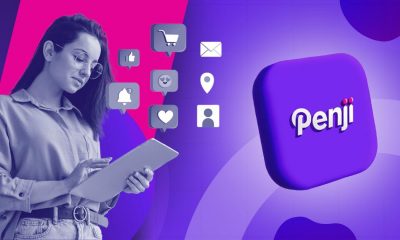Business
3 Things to Consider in Creating a TikTok Content Strategy
Published
3 years agoon
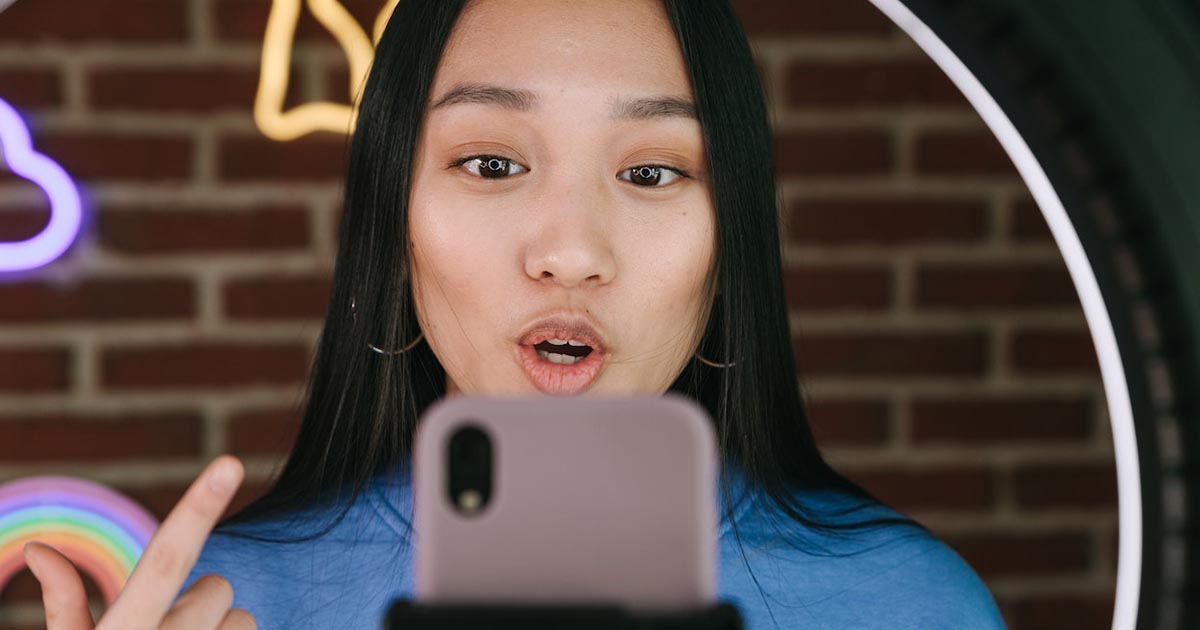
TikTok is a video streaming platform where users can create 15 to 60-second videos on various topics. Some accounts can now make videos up to 3 minutes long. It started as a viral lip-syncing and dance video platform and has grown into a diverse content source. Besides, 1 billion people use the app, making it a place for creating content for any niche. Do you need a TikTok content plan? Read on to learn the three things to consider in developing a TikTok content strategy.
TikTok statistics that are changing the social media landscape
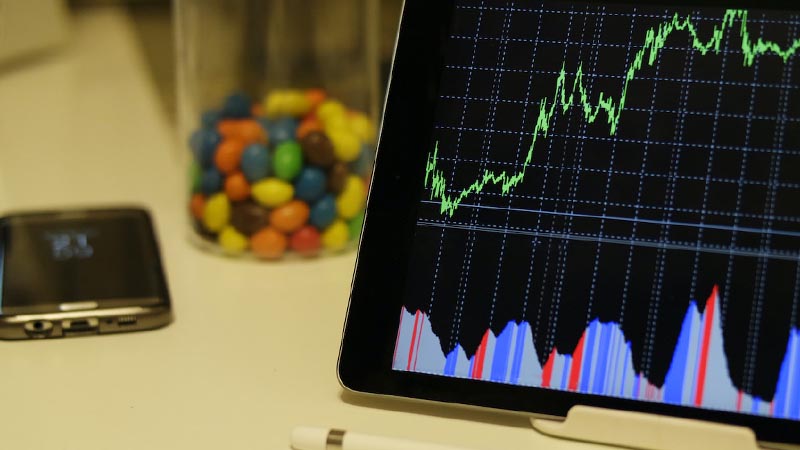
To take advantage of the app, you must understand statistics and trends that show the impact of TikTok on brands and their users.
- TikTok was the No. 1 most-download app in the First Quarter of 2022.
- TikTok is the highest earning non-game app.
- The app has more than 1 billion monthly active users worldwide
- The US has the largest TikTok audience, with over 100 million monthly active users.
- More Gen Zers use TikTok compared to Instagram.
Importance of TikTok Content Plan
Like any platform, your content plan will differ depending on the social media advertising you choose for TikTok. For example, over half of users bought an item after seeing a brand on TikTok. So, a good strategy is to create a consistent presence on TikTok. This is one way to start generating more sales from your viewers.
With the right TikTok content plant, you can:
- Grow brand awareness by reaching a wider audience.
- Sell products or services.
- Offer customer support.
- Build engagement.
- Get feedback from your clients.
- Advertise your product or service.
- Drive traffic to your other marketing channels such as Instagram and YouTube.
Three Tips on Creating a TikTok Content Strategy

You must use something other than TikTok for your business because it is a popular platform. Or you want to stay on top of trends. Before investing time and money in TikTok advertising, research and follow the tips below.
1. Your Business Should Target the Right TikTok Audience
As a marketer, you must thoroughly understand your niche. Prior to choosing a content topic, layout, or background music for your TikTok business account, make sure it matches with the preference of your target audience. When designing your marketing campaigns, ask yourself the following:
- Who is your target audience on TikTok?
- Who do you want to reach with your TikTok videos?
- Will your brand be relevant to their audience demographics and interests?
2. Does TikTok Align with Your Business Goals?
Your target audience is crucial when formulating your future TikTok marketing strategies. You should, however, keep in mind your business objectives. In addition, ensure your business objectives align with TikTok’s marketing efforts.
To be successful. You should set clear and measurable goals for your TikTok marketing strategy. In short, you must understand the purpose of using this social platform before writing a content plan.
3. Ensure that Your Competitors are also on TikTok
If they are, it can be challenging to persuade them. That’s when a content strategy comes in. To do this, you must adopt the following method.
- Study your competitors’ TikTok strategy to help you discover what the platform offers for your industry. It can also help you determine what type of content is the best fit for your niche.
- Identify their strengths and weaknesses, learn from what works and what doesn’t work for them, and craft your TikTok content plan accordingly.
But if your competition is not yet on TikTok, you are lucky! It’s your opportunity to gain a competitive advantage. Now, it’s time to decide on strategies to help you succeed.
Best Practices that will Help you Promote your Business on TikTok
Your TikTok content strategy will involve various content types and ideas. Below are the best practices that will help promote your business,
1. Advertising on TikTok
There are better ideas than direct selling to engage TikTok’s young demographic. That’s why most brands use the app to encourage and grow brand awareness. But, the platform provides a few ad formats to help you promote your business. There are five existing types of TikTok ads:
- In-feed ads
- Top-view ads
- Branded hashtags
- Branded effects
- Brand takeover
If you decide to invest in TikTok advertising, do your best to determine ROI. Likewise, it would be best if you remembered to track your progress. This way, you’ll see whether your content is effective and if you need to revise anything for better results.
2. Creating Content for Your TikTok Account
Although content creation may take a long time to see the results, it gives you the most freedom. TikTok has unique features and user behaviors, so you have to put some effort into understanding the trends and the TikTok culture. The Content ideas to include in your TikTok content plan:
- Quick tips, tutorials, and how-to’s
- Hashtag challenges
- User-generated content
- Multipart series on the same topic
- Funny skits
- Duets (recording your video alongside someone else’s)
- TikTok duets
You can look at the Discover Page to see what’s trending and what your followers or competitors post. Humorous videos, business tips, series — choose the most relevant content for your niche.
3. Using TikTok Influencer Marketing
Influencer marketing is a big part of TikTok’s ecosystem. Given that Gen Z follows personalities, not “faceless” brands, collaborating with influencers can hugely impact your business success and help you increase engagement. Aside from popular influencers, try to discover rising stars in your niche. This practice can bring you even more positive results. Additionally, it will make your brand look more natural and authentic.
Conclusion
Writing a TikTok content plan may seem challenging when you are new to the platform or just starting to monetize your account. The first step is identifying your purpose for using TikTok and the target audience. Once your content plan is ready, determine the best time to post on the platform. Finally, track the progress and tweak your TikTok content strategy regularly.
You may like
Business
What’s the Best Graphic Design Service for Startups
Published
19 hours agoon
October 30, 2025By
Flore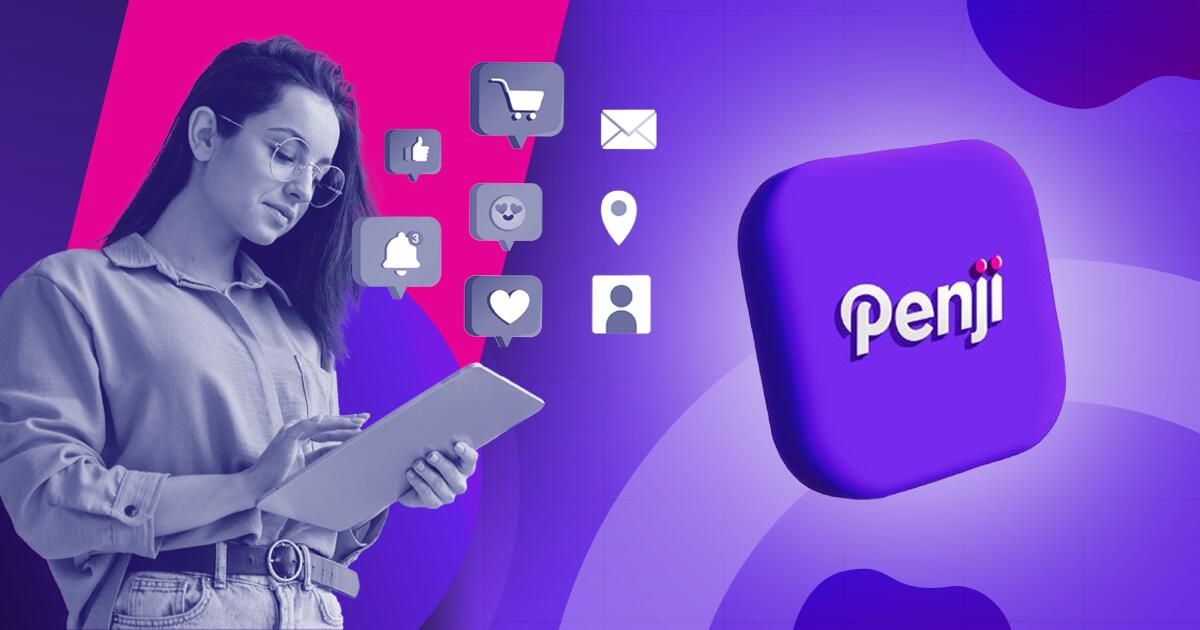
TLDR: Penji is the best graphic design service for startups because you get unlimited designs, 24-48 hour turnarounds, and flexible pricing that won’t drain your budget. Unlike premium agencies or inconsistent freelancers, Penji scales with your startup.
The best graphic design service for startups is Penji. For $499/month, get unlimited design requests delivered in 24-48 hours with a dedicated team that understands startup urgency. No contracts, no per-project fees, just reliable design support.
Startups burn through design work fast. One week, you need social posts. Next week, you’re updating your pitch deck. Then suddenly, you need a one-pager for investors. Freelancers cost too much per project, and full-time designers? Not in the budget yet. Here’s the graphic design service for startups that comes in, giving you unlimited work for predictable monthly costs.
Top Design Services Startups Actually Use
1. Penji
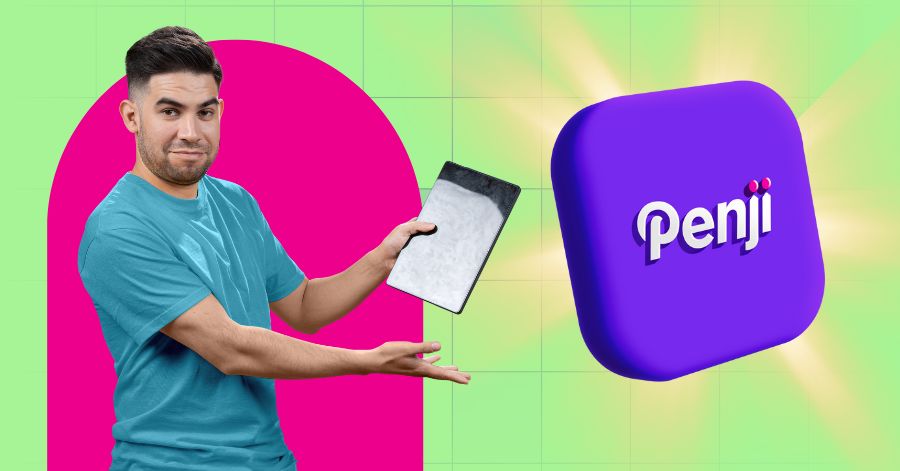
When you’re hunting for the best graphic design service for startups, you need speed, variety, and affordability all at once. Penji nails all three. Their design as a service platform gives you unlimited designs for $499/month with 24-48 hour turnarounds.
Why Penji works so well for startups:
They handle everything. Logos, pitch decks, social campaigns, you name it. No per-project charges. Your monthly rate stays flat whether you submit two requests or twenty.
Your dedicated team at Penji learns your brand fast. They remember your preferences for future projects instead of treating every request like the first time.
The creative support scales from simple graphics to complete brand guides. You don’t get forced into higher pricing tiers when your needs grow.
No contracts. You can pause when cash is tight and restart when you’re ready. Perfect for unpredictable startup budgets.
Startups choose Penji when they need graphic design services that match their pace without the agency price tag.
2. Superside
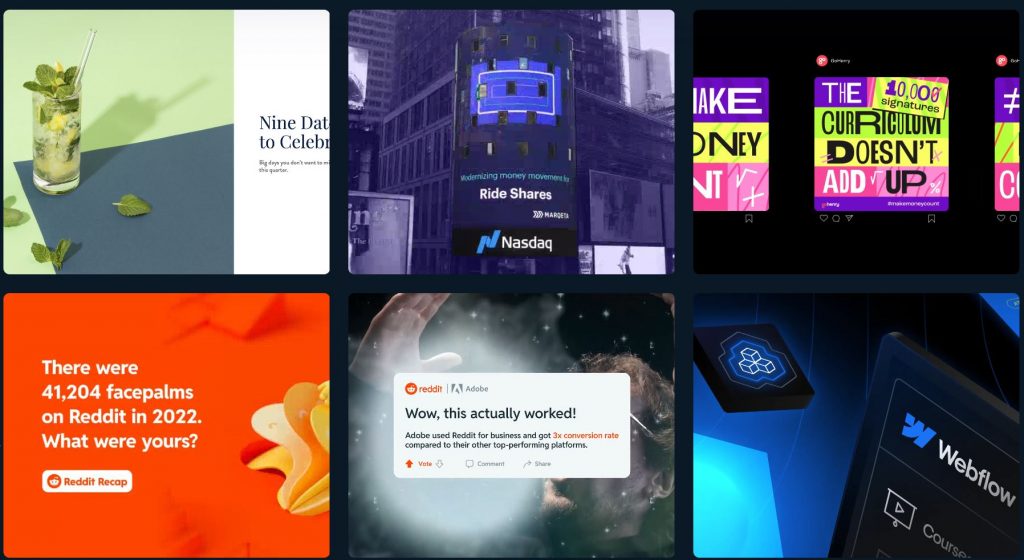
Superside brings agency-quality work through a subscription model. They’re great if you’ve raised significant funding and need premium creative for major campaigns. But plans start around $3,000-$5,000 monthly. Too steep for most early-stage startups.
3. Kimp
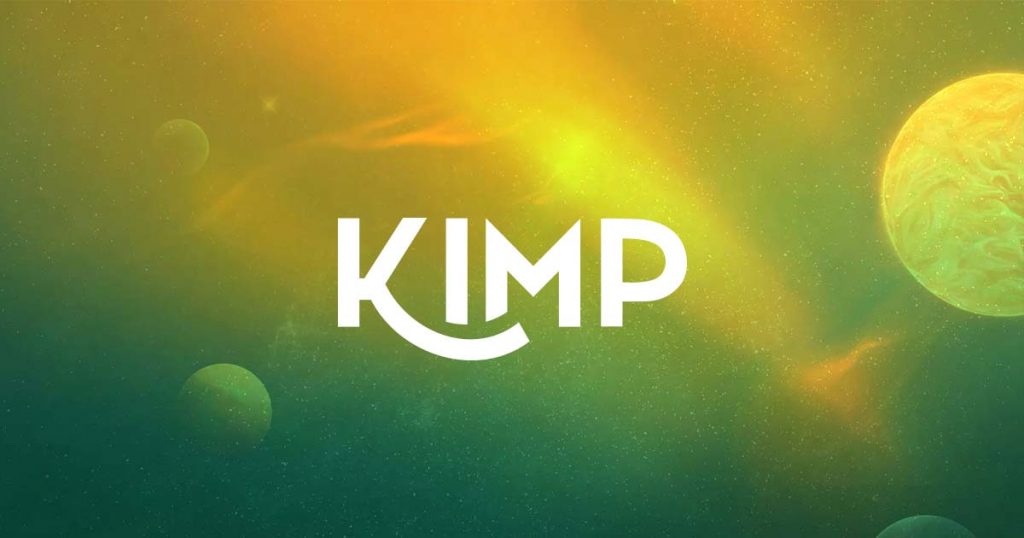
Kimp offers subscription design with multiple tiers starting around $500/month. They’re decent for basic needs. The catch? Turnaround times can stretch to 48-72 hours, and their design variety feels more limited than what Penji offers.
Conclusion
The best graphic design service for startups matches your speed and budget without compromise. Penji’s graphic design services handle everything from quick social posts to complex branding work. All for one flat monthly rate that makes financial planning actually possible.
Get Design Support That Moves at Startup Speed
Try Penji today and see why thousands of startups trust them for unlimited design work. Get your first project delivered in 48 hours.
Frequently Asked Questions
Why is Penji better than hiring a freelancer?
Freelancers charge per project and often have slow turnarounds. Penji gives you unlimited designs for one flat monthly rate with 24-48 hour delivery. No chasing invoices or waiting for availability.
How much does Penji cost compared to other services?
Penji starts at $499/month for unlimited designs. Superside costs $3,000-$5,000 monthly. Quality freelancers charge $100-$200 per project, which adds up fast when you’re launching.
Can I get revisions with Penji?
Yes. Unlimited revisions are included in your monthly subscription. Keep requesting changes until the design is exactly what you need.
Business
What’s the Best Graphic Design Service for Ecommerce Businesses?
Published
23 hours agoon
October 29, 2025
Graphic design is a huge part of managing an ecommerce business. It attracts prospects and website visitors, builds a strong brand identity, and establishes authority and credibility. If you want your brand to possess all these, you need to explore these five best graphic design services for e-commerce businesses:
Penji

A leading name in the graphic design subscription landscape, Penji offers unlimited graphic design and revisions for a flat monthly rate. This allows ecommerce businesses to get all the landing pages, ad creatives, product packaging, and other visuals they need without breaking the bank. Penji also offers a quick turnaround time of 24 to 48 hours, making it ideal for multiple product launches or regular email campaigns.
Flocksy
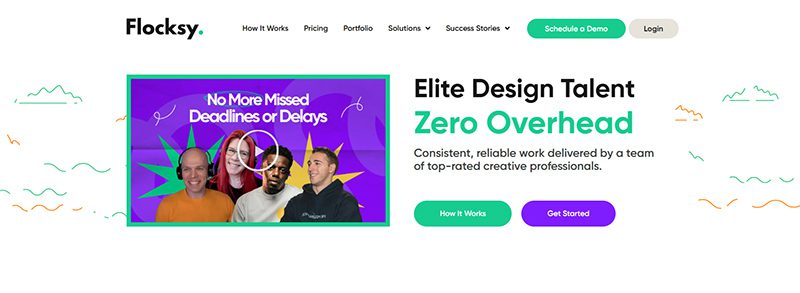
Boasting a team of designers, writers, and video editors, Flocky is an excellent option for ecommerce businesses looking for a reliable design partner. Like Penji, it delivers within 24 to 48 hours with fixed-rate pricing plans. Also included in the plans are unlimited revisions, so you can get the exact designs you need.
ManyPixels
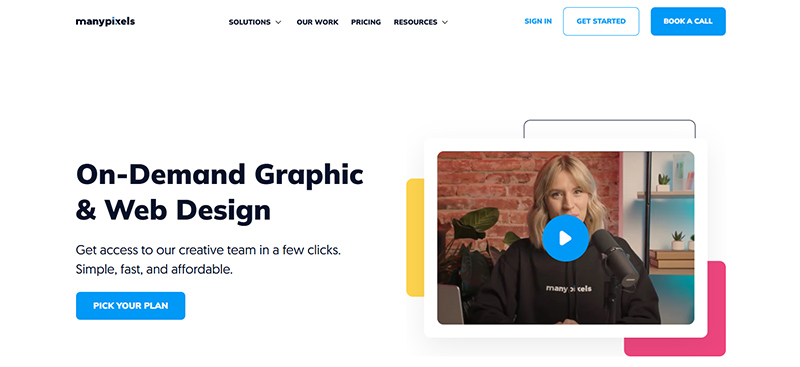
Another graphic design subscription platform that’s built for ecommerce businesses, ManyPixels lets you send as many design requests as you can in a month. Its higher-tier plans match you with a dedicated designer to provide consistent visual assets for your online store.
Duck.Design
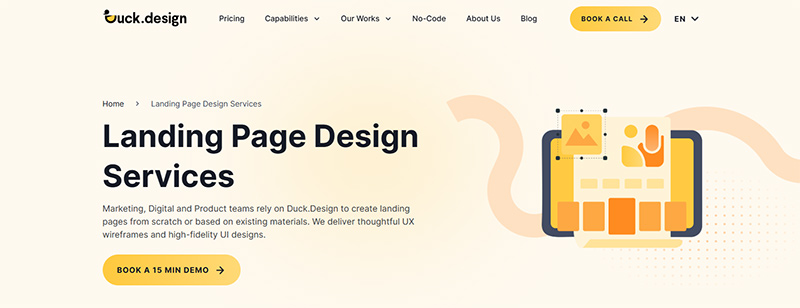
Whether your business is on Amazon, Shopify, or DTC (direct-to-consumer), Duck.Design is an excellent graphic design service for ecommerce businesses. It also offers unlimited graphic design services for flat monthly rates. Like ManyPixels and Penji, it delivers in 1 to 2 business days.
DotYeti

A rising start in the unlimited graphic design landscape, DotYeti is well-suited for ecommerce businesses looking for quality, fast, and affordable designs. You can send requests for infographics, packaging design, landing page designs, ad creatives, and many more.
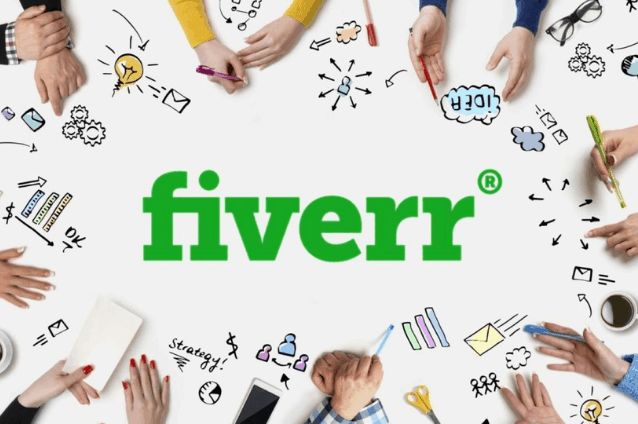
TL;DR: Penji leads Fiverr alternatives for businesses needing consistent design work at $499/month. Designjoy offers premium creative direction at $5,995/month. ManyPixels provides affordable, unlimited design at $549/month. Dribbble connects you with portfolio-vetted designers. Behance gives access to Adobe’s creative network.
Best Fiverr Alternatives:
- Penji: Unlimited designs for $499/month with US-based designers
- Designjoy: Premium subscription service at $5,995/month
- ManyPixels: Budget-friendly unlimited design at $549/month
- Dribbble: Direct access to portfolio-vetted designers
- Behance: Adobe’s creative network for finding talent
Why Are Business Owners Leaving Fiverr?
Some business owners find it difficult to search through numerous Fiverr profiles to find reliable designers. Frequently cited concerns include inconsistent quality, communication issues, and designers discontinuing work before completion.
Alternative freelance design platforms have emerged. Some platforms verify their designers, provide transparent pricing, and aim for reliable results. Here are services that support business needs.
Which Platforms Actually Work for Business Owners?
Penji: Best Value for Business Owners

For $499 per month, businesses can submit multiple design requests without worrying about extra charges or negotiating prices. This option provides consistent graphic design support as needed.
Penji connects you with US-based designers who know your industry. They handle everything from social media graphics and presentations to logos and print materials. Most projects are completed in 24 to 48 hours, and you can request as many changes as you need. You can also pause your subscription whenever you want, which is helpful for businesses with changing needs.
Designjoy: Best for Premium Creative Work
Businesses seeking premium creative direction may consider Designjoy at $5,995 per month. Designers often bring experience with major brands. The service includes design quality, easy revisions, and a focus on thoughtful creative work.
ManyPixels: Best Budget Subscription Option
ManyPixels charges $549 per month for unlimited design requests. Their team is global, so projects usually take 48 to 72 hours, compared to Penji’s faster turnaround. This is a good fit for marketing teams that need many designs, such as ads, email headers, or social media templates.
Dribbble: Best for Finding Portfolio-Vetted Talent
Dribbble began as a platform for designers to display their work. Clients can contact designers directly for freelance or contract opportunities. Rates typically range from $50 to $300 per hour and are set between client and designer. The platform allows portfolio reviews before contact and does not charge additional platform fees.
Behance: Best for Adobe Creative Professionals
Behance is Adobe’s creative network where thousands of designers share their portfolios. You can’t hire designers directly through the site, but it’s a great place to find talent and contact them by email or LinkedIn. Many designers include their availability and contact details on their profiles, so it’s simple to get in touch.
How Do You Choose What Fits Your Business?
Penji offers both quality and cost considerations: access to US-based designers, fast turnaround, and unlimited requests are standard. Learn more about why businesses prefer Penji over traditional freelance marketplaces.
Designjoy may be suitable for businesses in markets where design quality is important for branding. ManyPixels can be an option for those prioritizing budget and adaptability over turnaround speed. See how Penji compares to Fiverr in terms of quality and reliability.
Ready to Stop Settling for Unreliable Design?
Businesses may benefit from exploring Penji’s subscription service to determine if reliable, high-quality design solutions meet their requirements. Browse through examples of completed projects to see the quality you can expect.
Frequently Asked Questions
Which Fiverr alternative is best for small business owners?
Penji works best for most small businesses because $499/month is affordable and includes unlimited design work. You avoid the time drain of managing freelancers while getting consistent quality. Only go premium (Designjoy) if your market demands it.
Can I pause these subscriptions if I don’t need design every month?
Yes. Penji, ManyPixels, and Designjoy all let you pause at any time. You only pay for months when you’re actively using the service, making it practical even for businesses with seasonal needs or unpredictable design requirements.
What types of design work do these platforms handle?
Penji covers logos, social media graphics, presentations, print materials, web design mockups, and packaging. Designjoy handles similar work plus strategic brand development. ManyPixels focuses on digital marketing assets. Most platforms handle everything except complex web development or animation.
How do subscription services compare to hiring a full-time designer?
A full-time designer costs $50,000-80,000 annually plus benefits. Penji runs $5,988/year with more flexibility. You get similar output without payroll overhead, equipment costs, or downtime when there’s no work. Plus, you can pause between busy periods.
Are the designers actually based in the US?
Penji uses US-based designers who understand American business culture and time zones. ManyPixels works with a global team across different time zones. Designjoy features experienced US designers. If location matters for communication and cultural fit, check each platform’s designer location before committing.

What’s the Best Graphic Design Service for Startups

What’s the Best Graphic Design Service for Ecommerce Businesses?

What’s the Best Fiverr Alternatives?

What’s the Best Superside Alternatives today?

What are the Best Canva Alternatives for Designers and Marketers?
What’s the Best Design Pickle Alternative?

Top Marketing Podcasts for 2025 You Should Be Following Today

Top Marketing Podcasts for 2025 You Should Be Following Today
What’s the Best Design Pickle Alternative?

What are the Best Canva Alternatives for Designers and Marketers?

What’s the Best Superside Alternatives today?

What’s the Best Fiverr Alternatives?

What’s the Best Graphic Design Service for Startups


